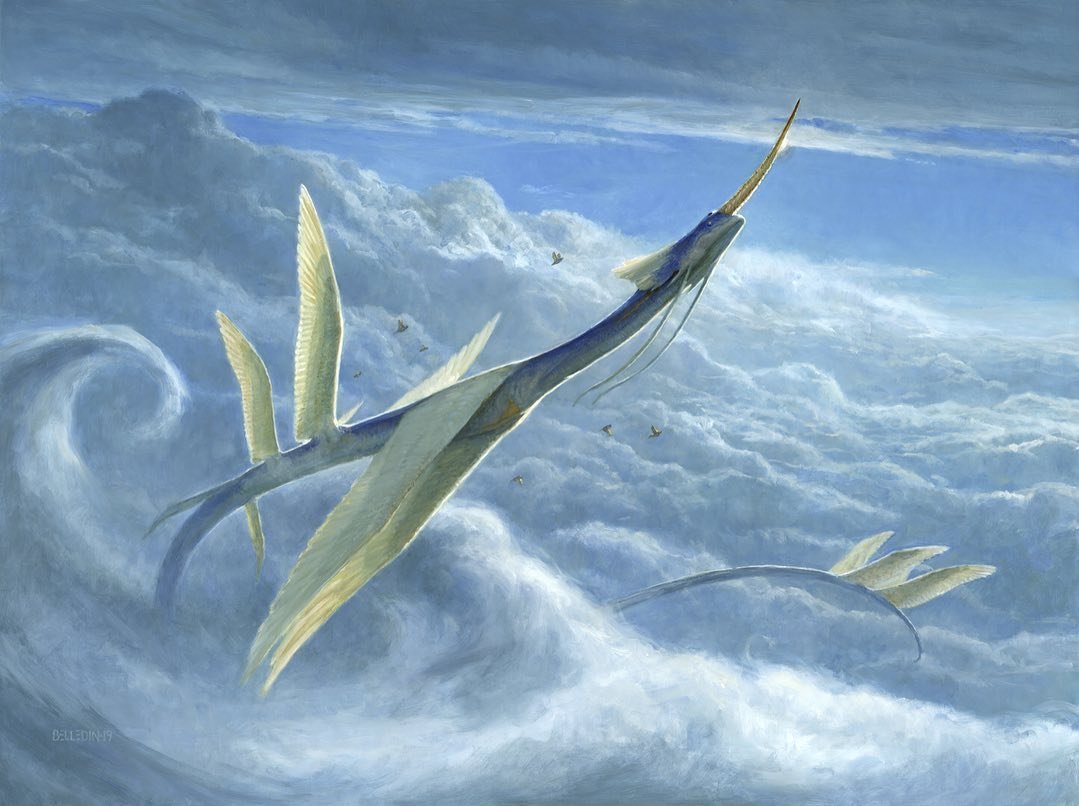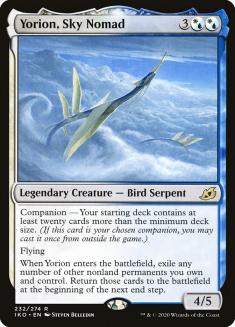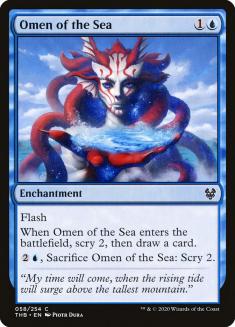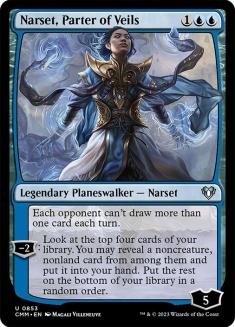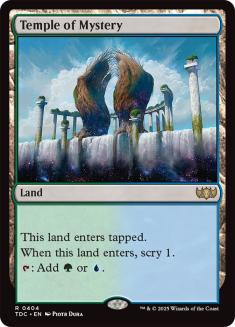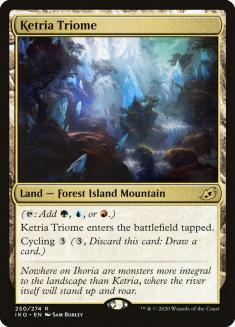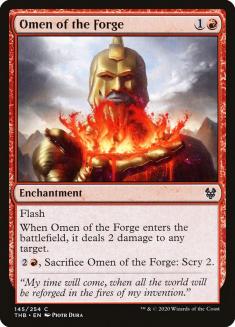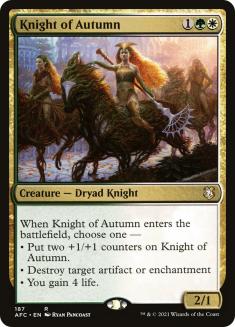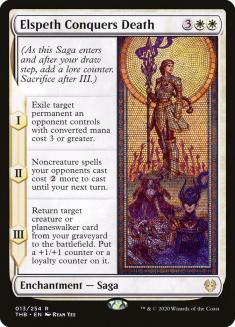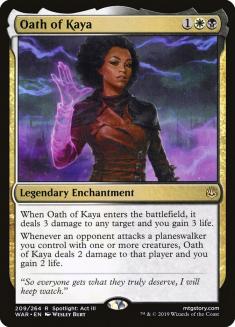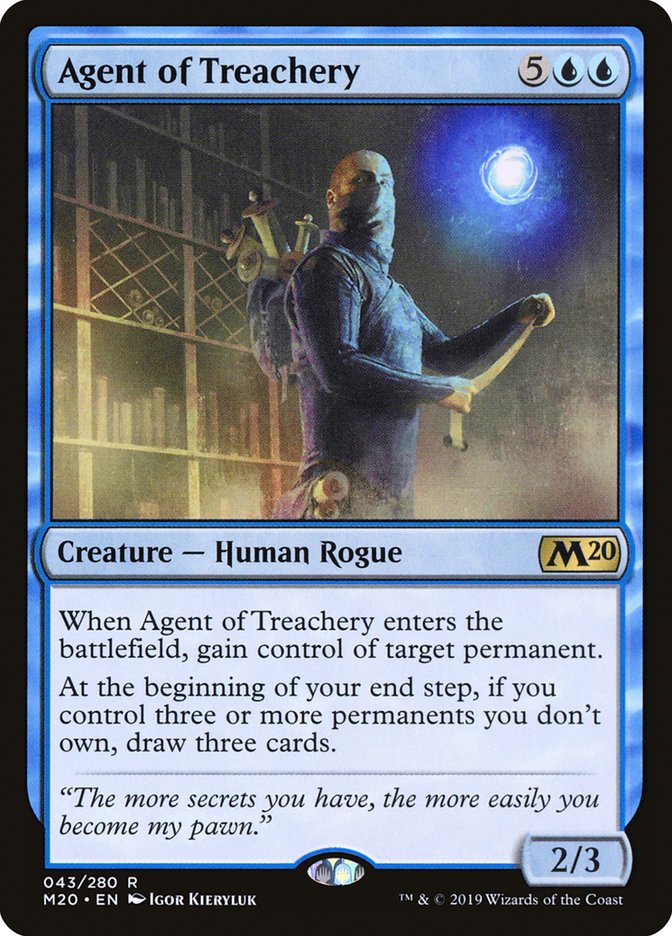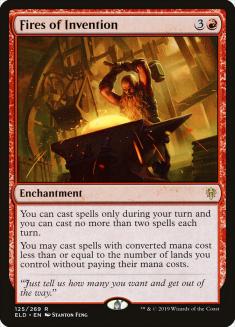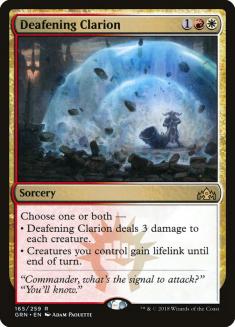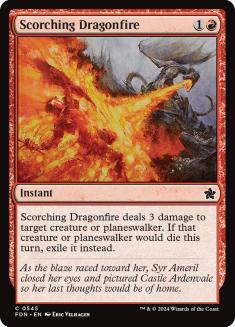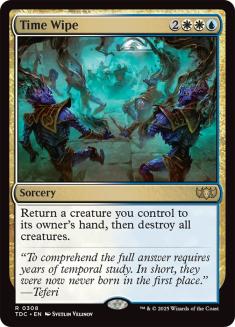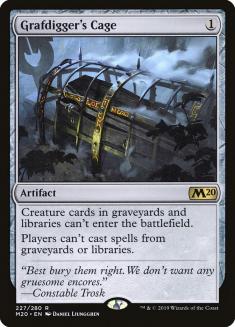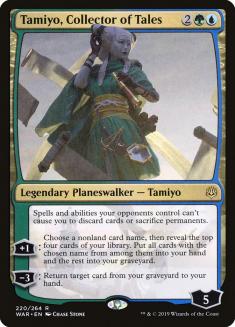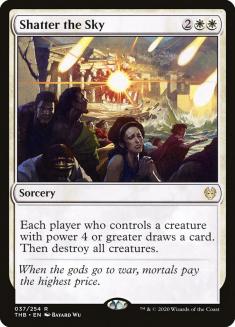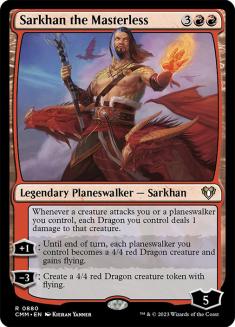When it comes to how many cards you’re going to play in your deck, I’m a purist — I believe you should always play 60 cards and people who play 61 are just undecided. I’ve seen arguments like “I really want this extra tutor target” or “I believe the ideal ratio of lands in this deck is 31.745%,” but I feel like that’s just what people tell themselves to justify the decision that was made just because they don’t know what to cut.
As such, it follows logically that I would not like Yorion, Sky Nomad. After all, if I’m not a fan of 61 cards, then I’m certainly not going to play 80. Except that’s not true. Yorion is actually my favorite companion by a lot! Basically, I believe going over 60 is a small cost, and getting Yorion as your companion is a huge benefit. Imagine someone went up to you and said, “Do you want to begin every game at 18 life?” You’d definitely say no. What if you got an extra card in return? Then you’d probably say yes. This is how I feel about Yorion. I’m paying a small price for a powerful effect.
I also believe that Ikoria Standard right now is in a prime position to mitigate Yorion’s drawback. The way I see it, there are three potential issues with going up to 80 cards, and this specific format offers ways around all of them.
1. You might have to make your deck worse because there simply aren’t enough good cards to add. This might be true for some decks (for example, if you had to build 80-card Mono-Red, that might be hard, since you’re already playing all the good one- and two-drops), but it’s definitely not true for Yorion decks. The power level in Ikoria Standard is through the roof, and you’ll have no shortage of potential good cards to add. In fact, I assumed when I built my Yorion decks I would finally stop having to agonize over which card to cut in the end, but soon enough all my Yorion decks were 85+ cards and I had to make cuts anyway.
2. You’re less likely to find any individual card. This could be a problem in strategies that rely on drawing either one specific card or a combination of cards (for example, Jeskai Fires). A regular Jeskai Fires deck has a 40% chance of drawing Fires of Invention in its opening hand. An 80-card Jeskai Fires deck would have only 31%. Once we factor in mulligans and potential card drawing / selection, such as scrys, the gap becomes considerably wider.
To mitigate this, Ikoria Standard offers a lot of very good card drawing and card selection. So yes, I’m less likely to draw Fires of Invention with 80 cards in my deck, but at the same time, if the twenty cards I’m adding include four copies of Omen of the Sea and four copies of Narset, Parter of Veils, how much am I really hurting my chances? It’s not as much as it would appear at first glance. The fact that those cards can be rebought with Yorion, Sky Nomad makes this problem even less severe in the long run.
3. Your deck becomes less consistent. Even if you keep the exact same ratios, you’re more likely to have mismatched draws. To illustrate, let’s extrapolate to a deck that contains one copy of Splinter Twin and one copy of Deceiver Exarch (just those two cards). If you draw the Splinter Twin, the next card you draw will necessarily be Deceiver Exarch. Now imagine your deck contains 1000 copies of Splinter Twin and 1000 copies of Deceiver Exarch. You could potentially draw a lot of Deceiver Exarchs or Splinter Twins in a row and never complete your combo.
Something similar happens in an 80-card deck. You might have the same ratio of spells and lands, but you’re more prone to drawing clumps of spells or clumps of lands as the game goes on, as each card you draw will “correct” the remaining of the deck by a smaller percentage. You’re also more likely to draw, for example, all removal against a deck without creatures, or no removal against a deck with creatures.
Thankfully, a lot of this can be solved because of the excellent Ikoria Standard manabases. Between Temples and Triomes, you can play a lot of lands without worrying so much about flooding. This means the sheer amount of lands in your deck will help prevent the “drew all spells” scenario, while the fact that a lot of them offer card selection will help with the “drew all lands” occurrences.
There’s also the fact that, in some specific situations, you’d actually want a bigger deck even without Yorion. It doesn’t come up too often, but some matchups in Ikoria Standard do come down to a pure war of attrition where you just exhaust all of your opponent’s meaningful cards. When I played Azorius Control, I often won games by simply decking my opponents (most often against Temur Reclamation, Temur Elementals or Azorius Control mirrors).
The Rest of the Deck
The first place we look to when we think Yorion, Sky Nomad is enters-the-battlefield triggers. There are a lot of good choices in Ikoria Standard:
Past that, it’s also very good with planeswalkers, given that it resets them. It’s especially a combo with Teferi, Time Raveler since the Teferi can bounce the Yorion and repeat the process. Tamiyo, Collector of Tales does the same thing if Yorion dies, though obviously Tamiyo’s +1 ability does not enjoy 80-card decks very much (but I’ve still found it to be a good enough card to run).
Then, there’s one card that interacts in a special way with Yorion:
We’ve already been through the fact that your Yorion deck will not find Fires of Invention as reliably, so you probably don’t want to be a super-dedicated Fires of Invention deck like Jeskai Fires, but that doesn’t mean you can’t run Fires of Invention anyway. The combo with Yorion is truly great — you cast a spell for free, then you cast Yorion for free, and then you use Yorion to exile Fires of Invention (alongside anything else), which means you can use all your mana to cast spells. At the very least Yorion is an extra free spell with Fires out, and at best it can let you cast an extra two or three spells that turn. I firmly believe that the core of Yorion, Sky Nomad + Fires of Invention is one of the best things you can be doing in Ikoria Standard.
So, how exactly should we build our 80-card deck? The first list of the deck that I tried was Corey Baumeister ELEAGUE deck:
Creatures (8)
Planeswalkers (13)
- 4 Teferi, Time Raveler
- 2 Tamiyo, Collector of Tales
- 3 Narset, Parter of Veils
- 1 Sarkhan the Masterless
- 3 Narset of the Ancient Way
Lands (33)
Spells (26)

After playing for a couple of days with it, I identified some things:
- I didn’t like Fae of Wishes. Even though it makes sense that Fae of Wishes would be good, given that your sideboard is less effective in an 80-card deck (which means that you’re going to draw whatever you bring in less often, so you aren’t as hurt by having a Wish sideboard instead), in practice I found it to be too clunky. It’s only good when you have Fires of Invention out, and this deck isn’t good enough at accomplishing that to justify Fae of Wishes. It doesn’t combo with Yorion (you can get something that combos with it, but that’s very slow) and your deck has answers to everything in the maindeck anyway. Fae of Wishes in this deck isn’t a “find a bullet” card as much as it’s just a value card and the rate isn’t good enough for value. There are some spots in which having access to a card like Ruinous Ultimatum will just swing the game completely, but I’ve found those to be few and far between.
- I also didn’t like Shark Typhoon. It’s a good card with Fires of Invention, since it lets you triple-spell, but Yorion already lets you use your mana to do that. You’re not overly worried about Teferi, Time Raveler, so you don’t need something to deal with it like Temur Reclamation does, and you have no trouble killing people without it. At some point I thought the deck would be a little light on win conditions if I cut it, but I haven’t found that to be the case.
- Elspeth Conquers Death is fantastic and probably the best combo with Yorion that we have in Ikoria Standard outside of Fires of Invention. Corey had three in the maindeck and one in the sideboard as a Wish target, but given that I cut Fae of Wishes, the decision to maindeck four is easy. I’m still brewing a lot of different Yorion decks but they will likely all include Elspeth Conquers Death.
- Knight of Autumn is quite good and a somewhat surprising omission to me, given that it saw play in the previous format where it had fewer targets and there was no Yorion to blink it. Fires of Invention decks are the most popular decks in the format right now, and Elspeth Conquers Death is also one of the best cards in several different lists. Temur Reclamation plays Wilderness Reclamation and sometimes hardcasts Shark Typhoon, Sacrifice decks play Witch’s Oven, Cycling decks play Improbable Alliance, and against generic aggressive decks you can do with the lifegain. This card is basically good against everyone.
- The best way to go over the top of people in this deck is Agent of Treachery. The games against other Fires decks can get quite grindy, and then Agent of Treachery is the ultimate trump. Between Yorion; Elspeth Conquers Death; Tamiyo, Collector of Tales; and Teferi, Time Raveler, you get to reuse your Agents a lot.
There are about a million different ways to build this deck (which is another testament to how powerful the format is — in some previous Standard formats all decks would basically be locked into the same 80), but this is what I’ve been playing lately:
Creatures (12)
Planeswalkers (11)
- 4 Teferi, Time Raveler
- 2 Tamiyo, Collector of Tales
- 3 Narset, Parter of Veils
- 2 Narset of the Ancient Way
Lands (31)
Spells (26)

This version is geared towards beating other Fires of Invention decks. It’ll be worse against aggro decks but not by much.
At its core, this is a grindy control deck that tries to exhaust your opponent of both threats and answers. Most games play out the same way — you cast some removal or card drawing early on, then a planeswalker, and these cards all stay on the battlefield to give you Yorion value later on. At some point, when the battlefield has gotten big enough, you cast Yorion, Sky Nomad out of your sideboard and that’s when the game generally ends against aggro decks.
If the game doesn’t end there, you can try to repeat the process by getting another Yorion trigger. You can do that with Teferi, Tamiyo, or Elspeth Conquers Death.
The trickiest part of the deck is knowing how much Yorion value is enough. Against aggressive decks, you don’t need much — blinking one Omen of the Sea and one Omen of the Forge could be enough to win the game alongside a 4/5 flyer. Against other slow decks with Elspeth Conquers Death, though, you want to try to get more value from Yorion. It’s perfectly fine to just pass the turn with five mana open when you could be casting Yorion instead if you deem you’re not getting enough from it. Remember — you’re an 80-card control deck, so the burden is not on you to close out the game quickly. You might only be getting Yorion’s effect once, since they will exile it, and you need to extract the most from it (or you need to bounce it back to your hand immediately with Teferi, Time Raveler, which is a way around that).
Then, if you get to the super-late-game, you try to win with Agent of Treachery. If you still have access to Yorion, then all the better, but if you don’t, you can use whichever ways you had of reusing Yorion to reuse Agent of Treachery instead. Between Agents and Knight of Autumns hitting their Elspeth Conquers Deaths repeatedly, it’s not hard to exhaust them of threats and eventually win.
Sideboard
The world is your oyster when it comes to the sideboard with this deck, but I’ve found that I want a reasonable number of cards to bring in against the aggressive decks, given that my maindeck is geared towards control. There are at least seven cards you need to take out against the Lurrus of the Dream-Den decks (four Elspeth Conquers Death and three Agent of Treachery) and the best is to just have removal.
I wanted something good in mirror and mirror-like games in the sideboard, and my first instinct was to adopt Corey’s Sarkhan the Masterless. Upon further consideration, however, I also realized I probably just wanted another Yorion. In mirror matches, Yorion is a very important card, but it often gets immediately hit by Elspeth Conquers Death, which means you can’t rebuy it. Having another copy that you can naturally draw can be quite useful. The fact that drawing the second copy is never good in the beginning of the game (since you always have access to one) is not an issue in those matchups, since they tend to go pretty long. It’s possible that in the future I go up to three Yorions.
All things considered, sideboarding with my current list of the deck is very easy. Half the sideboard is geared towards aggro and half is geared towards control, and there’s enough to take out that you always bring in all the cards that seem good. If you play versus a deck that is not listed, you just need to identify which big group it belongs to — aggro or control — and sideboard the same way. The main variation shows up in what you take out versus aggressive decks, where certain cards can be good or bad depending on their build. For example, Elspeth Conquers Death is of relative strength depending on how many targets they have, and a card like Tamiyo will be good if it’s passive is good (they have discard or Priest of Forgotten Gods) but bad if it isn’t, but you should be able to know that just by playing one game against a deck.
VS Lurrus of the Dream-Den Aggro Decks
Out:
In:
The good part about having a guaranteed Yorion is that you can overload on removal without risking bricking off too much, which was an issue with previous control decks.
Tamiyo is bad in general versus aggressive decks, but most black-based decks will have discard and/or Priest of Forgotten Gods, and Tamiyo stops both of those. If they don’t have these cards, take Tamiyo out and keep in Narset and Knight. Also keep in mind that Tamiyo will stop Kroxa, Titan of Death’s Hunger’s discard ability, but it will not stop the damage. In fact, if you have Tamiyo out, you cannot stop the damage (since you’re unable to discard), which can be a problem in some games.
It’s also important to point out that Grafdigger’s Cage stops your own Uro, Titan of Nature’s Wrath, but the deck has many ways around that. The easiest one is to simply play Yorion and blink the Cage for a turn, which lets you cast Uro, but you can also bounce it with Teferi or even destroy it with Knight of Autumn if you have another one to cast later.
VS Non-Lurrus of the Dream-Den Aggro Decks
Out:
In:
Here, you can obviously tailor what you take out depending on what they’re playing. Elspeth Conquers Death and Knight of Autumn change wildly in value based on what is in their deck, and Tamiyo is good if they have Priest of Forgotten Gods.
VS Keruga Jeskai Fires
Out:
In:
I keep some of the red removal because of Legion Warboss (if they don’t have that card, feel free to take it all out). I think Scorching Dragonfire is better than Omen of the Forge in this matchup since it kills Bonecrusher Giant or Narset, Parter of Veils after one activation (not all lists play that, but some do).
VS Most Other Yorion Decks
Out:
In:
There are many different Yorion builds (Bant Yorion, Four-Color Yorion Fires, Five-Color Niv-Mizzet Yorion, Yorion Esper Doom Foretold, etc.), but they all play out very similarly, so the sideboard plan is always the same. Elspeth Conquers Death is the key card in the matchup from both sides, so you want as many Knight of Autumns as you can get, and then you hope to go over the top of them with Agent of Treachery. If possible, try to not expose your Yorion to Elspeth Conquers Death (one good way to prevent that is by having Teferi, Time Raveler and bouncing it immediately).
VS Temur Reclamation
Out:
In:
Even though the sideboard strategy is the same versus this deck as versus the other slow decks, a lot of the cards you’re sideboarding in here are suboptimal in this matchup. Unfortunately, there just isn’t much in your sideboard that is applicable here. I imagine you’d want some kind of counterspell for this matchup, but in general I’m not a fan of counterspells in this deck, since you have Fires of Invention and you tap out a lot.
There are a lot of ways to build Yorion Four-Color Fires (and my next project is testing the Niv-Mizzet Reborn versions), but, whichever way you go, I believe getting access to a free Yorion is easily worth playing 80 cards, and one of the best things you can be doing in this format (and also one of the most fun to figure out — I can’t remember the last time I enjoyed brewing this much).
Once we get paper Magic back, sleeve manufacturers had better start shipping them in packs of 95, because Yorion, Sky Nomad is here to stay.

